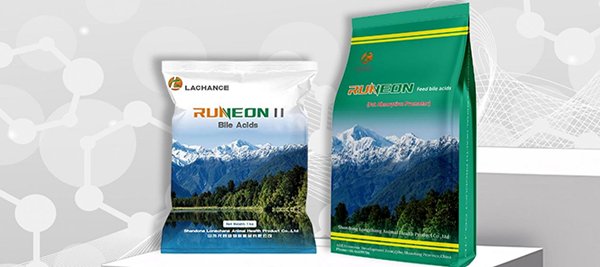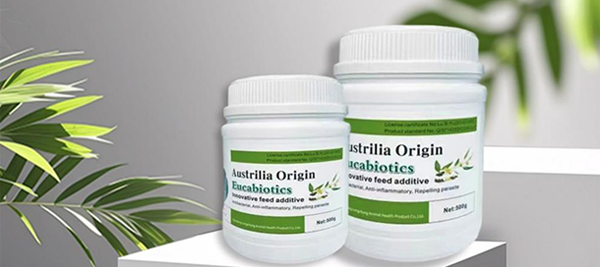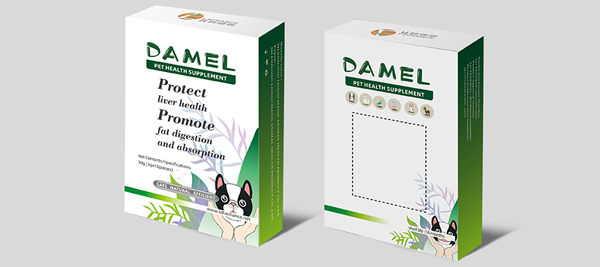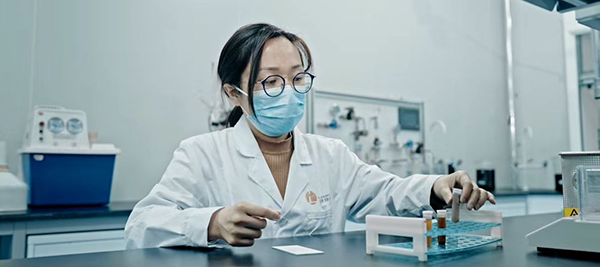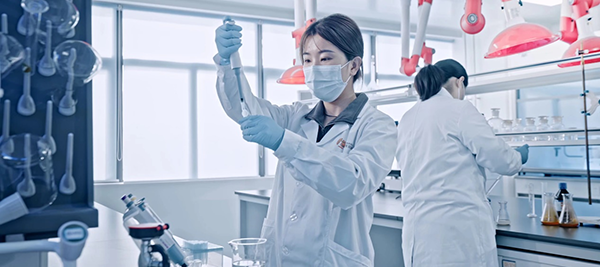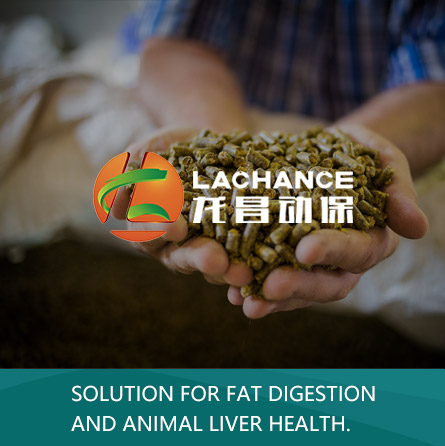Influence of Feed Nutrition in Laying Hens Breeding
There are many problems in commercial laying hen farming, such as uneven feed quality, poor management, high death rate, sub-healthy chicken flocks, frequent epidemics, low egg commodity rate, and poor economic benefits. This article explains how to minimize these problems from the aspects of feed quality and nutrition, and the economic benefits brought by high-quality laying hen feed to farmers.
Important indicators to measure high-quality laying hen feed
The total egg production at the age of 72 weeks, the dead scouring rate, the feed-to-egg ratio, the body weight of rearing chickens, the quality of egg shells, and the quality of eggs are closely related to the health status of laying hens and the production performance of laying hens. The egg production at the age of 72 weeks is a comprehensive reflection of the duration of the peak egg production, the average egg weight, and the egg production rate of the housed hens. The level of these indicators is not only related to factors such as variety, management, and epidemic prevention, but feed quality and nutrition are important factors to achieve the highest egg production of hens at 72 weeks of age.
The performance of high-quality laying hen feed: the laying hens are physically strong, reach the peak quickly, maintain the peak for a long time, and produce high and stable laying hens. At present, the world's advanced egg production at 72 weeks of age is 20-21 kg, the feed-to-egg ratio is 2.2-2.0:1, and the death rate of more than 75% of chickens is 2-6%. In my country, the egg production at the age of 72 weeks is 16-19 kg, the feed-to-egg ratio is 2.3-2.5:1, and the death rate of more than 65% of the chickens reaches more than 10%.
Effect of High-quality layer nutrition on production Performance
1.Goals of the laying period
Ensure the best health status of laying hens, ensure the simultaneous growth of egg production rate and body weight, fast peak and long maintenance time, long egg production cycle, and late elimination.
The commercial rate of eggs is high, that is, to obtain suitable egg weight, good eggshell quality and egg quality. The production cycle of laying hens is long, and the goal of high and stable production is inseparable from the health and physical fitness of the laying hens. Everything is centered on the health of the intestinal tract and the health of the laying hens, and scientific nutrition preparation, strict raw material selection, and scientific feeding management are carried out. and epidemic prevention.
2.Design concept of high-quality laying hen feed
First, the peak period should be divided into at least 3 stages: upper peak feed (5% egg production rate to 32 weeks of age), peak maintenance feed (32 to 60 weeks of age), and late peak feed (after 60 weeks).
The second is the setting of an appropriate level of metabolizable energy. The energy design level of the diet during the laying period depends on factors such as the weight of the laying hen, egg production rate, egg weight, and environmental temperature. After the feed intake based on energy is determined, the crude protein, amino acid Sufficient addition and balance of various nutrients such as vitamins, vitamins, and trace elements are very important to egg weight, egg production rate, anti-stress ability, and egg production performance.
The third is to fully consider the effects of anti-oxidative stress, mycotoxin adsorption, electrolyte balance, salt, and crude fiber content on the health of laying hens. The fourth is to consider the levels of various nutrients that affect the quality of eggshells in the late laying period. Under normal circumstances, the metabolic energy of laying hens is not less than 11.30MJ/kg (national standard), the crude protein is 16% to 17%, the digestible lysine is not less than 0.7%, and the linoleic acid is not less than 1.8%.
3.High benefits brought by high-quality peak materials
The egg production rate, egg weight, and body weight of laying hens are increasing rapidly every day when they reach the peak, and the feed intake capacity is low at this time, so a diet with higher nutrient concentration is required. The benefits of high-quality peak feed are that the egg production peak is fast, the egg weight is appropriate, the peak duration is long, the egg production cycle is extended, and the total number of eggs laid is finally increased. Sufficient supply of nutrients is the key when climbing the peak. During the period of 18-32 weeks, the average weight of Hailan brown layer hens increases by 410-430g, fully ensuring various nutrient reserves is critical to maintaining the duration of the peak egg production. Less weight gain is manifested as a shorter peak duration and an increased death rate after the peak.
The peak stage is the period when laying hens are very prone to disease and encounter stress, and the ability of chickens under stress to absorb nutrients is worse than normal, so to maintain and ensure the peak egg production rate of chickens, it is necessary to fully Ensuring the nutrient supply of the flock and maintaining the health of the reproductive system requires high levels of metabolizable energy and amino acids.
The test results show that the survey data of 112 chicken farms using high-quality laying hen feed before the age of 50 weeks show that the peak time is shortened by about 5 days, the egg weight is increased by 0.5-1.2g, and the time for the daily egg production rate to reach 90% is extended by 2-5 days. Maintained for 6-7 months, the death rate decreased by more than 2%, the average egg weight at 72 weeks old was 65.3g, the daily egg production rate was 76%-80%, and the egg production reached 18.5-20.0kg. However, the biggest problem in laying hen farms using low-grade materials is that the death rate is as high as 10.8%, and the laying time is early, and the egg production is 16-18kg. Most farmers are concerned with culling weight, rather than culling time and egg production performance and culling rate when chickens are culled.
Feed performance and hazards of low-quality laying hens
1.Low energy, high protein, extremely unbalanced nutrition
The low-quality laying hen feed on the market has a metabolic energy of about 10.4MJ/kg and a crude protein content of 17%. The energy intake is used to regulate the feed intake of laying hens. If the energy is low, the feed intake will be high, and the protein intake will be relatively high. Excess protein will be converted into energy utilization, and the metabolic burden of the liver and kidney will increase, which will damage the health of the body. When converted into energy utilization, energy is consumed. The efficiency of converting metabolic energy into net energy: 71% to 75% for carbohydrates, 60% to 68% for protein, and 90% for fat. It can be seen that the conversion efficiency of this kind of feed with high protein and low energy is not good, and the feed-to-egg ratio reaches 2.3~2.6:1. The feed-to-egg ratio of high-quality peak feed is 2.0~2.2:1.
Low-quality feed is also manifested in the extremely unbalanced calcium-phosphorus ratio, poor quality vitamins, and small additions, which deteriorate egg quality and eggshell quality, and the egg commodity rate is low. Farmers need to use a large amount of electrolytic multidimensional, probiotics, etc., which increases the cost of farming and brings invisible economic losses.
2.The sources of protein raw materials are extremely poor
The use of low-quality feather meal, meat meal, blood meal and other animal-derived feed materials has high content of Escherichia coli and Salmonella, which will damage the intestinal health of chickens, increase the metabolic burden on the kidneys and liver, increase the self-detoxification reaction, increase drinking water, and excrete loose stools. . Low digestibility and poor-quality fat (high oxide or unsaponifiable matter) in meat meal and feather meal may cause viscous feces and black feces. Feed containing low-quality animal origin stays in the trough for a long time or even overnight in summer, which is prone to rancidity, deterioration, and mildew, which seriously affects the health of the intestinal tract and the laying performance of laying hens. According to reports, the detection rate of Salmonella in different feed sources is 27.8% for meat and bone meal, 33.3% for meat meal, and 33.3% for feather meal.
3.Poor security
One is the high content of heavy metals lead, arsenic, cadmium, chromium and fluorine in animal-derived feed. These heavy metals can lead to immune cell dysfunction, resulting in immunosuppression, leading to an increased probability of immune failure and a high incidence rate.
The second is that the protein of animal-derived feed raw materials is easy to spoil and deteriorate, and indicators such as volatile basic nitrogen, histamine and trimethylamine need to be strictly controlled. For animal-derived feeds, indicators such as acid value, peroxide value, and malondialdehyde content should be strictly controlled.
Third, the use of a large number of corn by-products should pay attention to the excessive toxins such as zearalenone and aflatoxin. Its toxins can stimulate and destroy the intestinal mucosa, increase the permeability of the intestinal mucosa, and cause diarrhea and a sudden drop in egg production rate of laying hens.
The fourth is to use a large amount of cotton meal and rapeseed meal with anti-nutritional factors such as gossypol and glucosinolate exceeding the standard. Free gossypol is very toxic, and the content exceeding the safe limit will lead to growth retardation, poisoning and even death. Feeding rapeseed meal containing high sulfoglucoside will cause goiter, separation and shedding of thyroid and kidney epithelial cells, increase of broken and soft eggs, tendon detachment, death and hepatic hemorrhage.
The fifth is about the use of medicinal residues. The "Single Feed Product Catalog (2008)" stipulated in the Announcement No. 977 of the Ministry of Agriculture of the People's Republic of China does not allow the use of medicinal dregs products. The medicinal dregs will cause bacteria to develop drug resistance and are insensitive to bacterial invasion. Egg safety and human health are also threatened, and most feed mills will not use such products.
Feed safety is not only related to the safety and health of feeding animals, but also threatens the health and safety of human beings. With the occurrence of a series of incidents such as Shuanghui Clenbuterol, the Chinese government has gradually paid more attention to the safety of livestock and poultry products. Supervision will definitely be strengthened, and the use of inferior raw materials will be strictly controlled.
4.Poor egg quality
The black-colored feed on the market has a high content of rapeseed meal, in which sinapine is transformed into trimethylamine, and brown-shell hens cannot be degraded, resulting in a fishy smell. The trimethylamine produced by oxidation and corruption when animal-derived feed deteriorates will also make eggs have a fishy smell. High cottonseed content can cause the yolk to turn black during storage. Meat and bone meal and other fatty acid decay products destroy fat-soluble vitamins and lutein, resulting in vitamin deficiency, egg yolks that are not yellow, skin color and leg shins become pale, and even encephalomalacia.
After the laying hen enters the laying period, in order to meet the maximum laying demand, the nutrient consumption is large, and the hen's physique tends to deteriorate, which affects its own immunity, which will lead to the outbreak of pathogenic bacteria lurking in the hen's body and the infection of external diseases The rate of infection increases; viruses such as avian influenza virus and egg production drop syndrome virus are latent in hens for a long time. Although young chickens do not show clinical symptoms, once the peak egg production period is reached, the hens will break out when their immunity is weakened. , easy to get sick and lead to poor egg production rate.
It can be seen that feed nutrition during the brooding period, growing period, expected production period, and egg production period are closely related to disease resistance. Poor nutrition will aggravate the disease or easily break out the disease.
To sum up, the consequence of low-quality feed is that the egg production peak cannot be reached, and even if it reaches the peak, it will not last long. The intestinal health of laying hens is damaged, prone to disease, poor egg production performance, high death rate, or even eliminated early, low commodity rate of eggs, resulting in huge economic losses.

